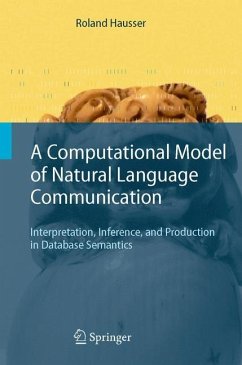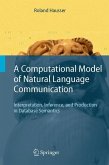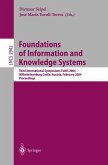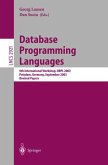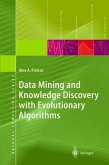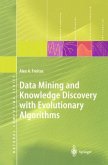Everyday life would be easier if we could simply talk with machines instead of having to program them. Before such talking robots can be built, however, there must be a theory of how communicating with natural language works. This requires not only a grammatical analysis of the language signs, but also a model of the cognitive agent, with interfaces for recognition and action, an internal database, and an algorithm for reading content in and out. In Database Semantics, these ingredients are used for reconstructing natural language communication as a mechanism for transferring content from the database of the speaker to the database of the hearer.
Part I of this book presents a high-level description of an artificial agent which humans can freely communicate with in their accustomed language. Part II analyzes the major constructions of natural language, i.e., intra- and extrapropositional functor - argument structure, coordination, and coreference, in the speaker and the hearer mode. Part III defines declarative specifications for fragments of English, which are used for an implementation in Java.
The book provides researchers, graduate students and software engineers with a functional framework for the theoretical analysis of natural language communication and for all practical applications of natural language processing.
Part I of this book presents a high-level description of an artificial agent which humans can freely communicate with in their accustomed language. Part II analyzes the major constructions of natural language, i.e., intra- and extrapropositional functor - argument structure, coordination, and coreference, in the speaker and the hearer mode. Part III defines declarative specifications for fragments of English, which are used for an implementation in Java.
The book provides researchers, graduate students and software engineers with a functional framework for the theoretical analysis of natural language communication and for all practical applications of natural language processing.
From the reviews: "Roland Hausser's book provides a clear and detailed introduction into the field of database semantics (or DBS). The task of the database semantics project is to provide a model of natural language communication between human agents and robots. ... The book is divided into three parts. ... This is a competent and carefully crafted book. ... The book will be valuable for instructors and graduate students in computer science and linguistics. Advanced undergraduates may also study it with profit." (Sandy Berkovski, Natural Language Engineering, Vol. 15 (3), 2009)

